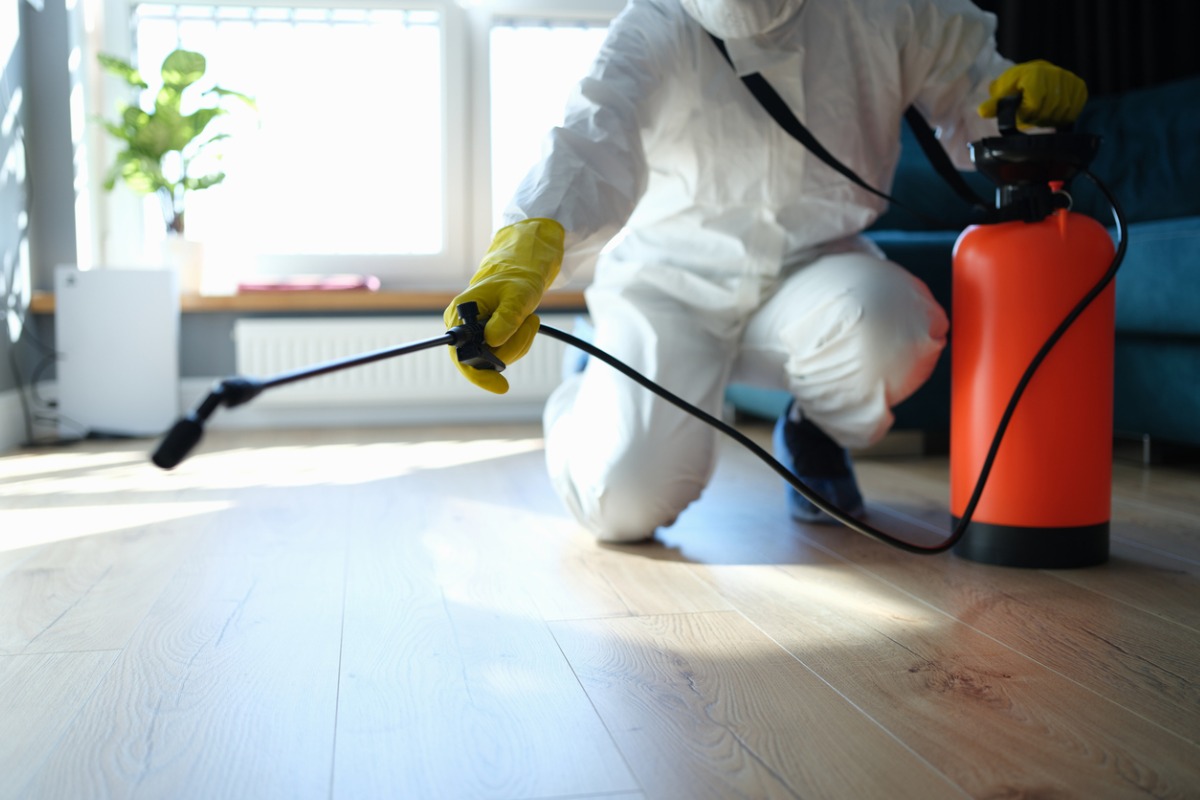Detailed Termite and Bug Solutions with Pest Control Lockhart
Detailed Termite and Bug Solutions with Pest Control Lockhart
Blog Article
Discovering Problem and Treatment Techniques worldwide of Insect Control
The landscape of pest control includes a myriad of obstacles, specifically as infestations of typical family parasites proceed to evolve. By integrating precautionary procedures with innovative monitoring strategies, such as Integrated Pest Management (IPM), property owners can better secure their settings.

Typical Family Vermin
When it involves handling our space, understanding common household pests is essential. These insects not only disrupt our comfort but can also position health risks and damage residential or commercial property. The most prevalent household pests consist of ants, roaches, rats, termites, and bed insects.
Ants, commonly seen foraging in kitchen areas, can pollute food and establish large swarms. Roaches, understood for their durability, can set off allergies and spread pathogens. Rats, consisting of mice and rats, can cause architectural damage and carry diseases like hantavirus and salmonella. Termites, usually described as "silent destroyers," can compromise the honesty of wood structures, leading to pricey repair services. Bed bugs, although not condition service providers, can trigger considerable pain via their bites and bring about emotional distress.
Recognizing the indicators of these insects, such as droppings, nests, or attack marks, is necessary for early treatment (Pest Control Lockhart). Proper hygiene practices, securing entry factors, and maintaining a clutter-free setting work preventative actions. By identifying these usual home parasites and understanding their actions, homeowners can take positive steps to reduce problems, guaranteeing a much healthier living environment
Comprehending Parasite Infestations
Pest infestations can escalate rapidly, turning a minor inconvenience right into a significant problem if not addressed quickly. Common elements contributing to infestations include poor sanitation, structural vulnerabilities, and seasonal adjustments that drive parasites inside.
Recognizing the kind of parasite is crucial, as various varieties display different habits and reproductive rates. Rodents might develop nests in concealed areas while insects like roaches grow in moist environments. Early detection usually rests on acknowledging signs such as droppings, gnaw marks, or uncommon noises, which can suggest a problem prior to it ends up being severe.
Ecological conditions also play an essential function in insect expansion. Warm, damp environments can assist in the fast growth of insect populaces, while modifications in landscape design or building and construction can accidentally develop favorable environments. Normal evaluations and preventative actions are vital to mitigating the danger of infestations. An educated strategy to comprehending these characteristics prepares for reliable pest monitoring strategies in the future.
Treatment Techniques and Methods
Reliable treatment methods and methods are necessary for mitigating insect invasions and recovering a secure setting. A multifaceted method is typically best, including chemical, organic, and mechanical approaches tailored to the specific insect and the intensity of the invasion.
Chemical therapies consist of using pesticides and herbicides, which can properly remove parasites. However, proper application and adherence to safety guidelines are essential to reduce dangers to people and non-target organisms. Integrated Bug Administration (IPM) motivates the cautious use chemicals as a last hope, relying rather on surveillance and limit levels to determine treatment demands.
Organic control techniques involve presenting natural killers or parasites to reduce bug populations. This strategy is progressively popular, especially in agricultural setups, as it promotes ecological sustainability.
Mechanical methods, such as catches and barriers, give immediate alleviation from insects without presenting chemicals. Options consist of sticky traps for bugs or physical obstacles for rodents.
Inevitably, the option of therapy method must additional hints consider the certain pest, the atmosphere, and possible influence on human wellness and communities. A well balanced combination of these approaches can properly manage infestations while advertising long-lasting parasite control solutions.
Safety Nets for House
Proactively addressing bug concerns before they escalate is crucial for keeping a healthy home atmosphere (Pest Control Lockhart). Carrying out reliable safety nets can dramatically decrease the possibility of problems, inevitably safeguarding both your residential property and health

Correct landscape design likewise plays a critical duty in avoidance. Maintaining shrubs and trees trimmed away from your house reduces the chances of parasites locating their method inside your home. Moreover, guarantee that drainage systems are functioning successfully to avoid standing water, which can pull in insects and other insects.
Finally, routine inspections are suggested. On a regular basis checking for indicators of insect activity permits early intervention. By embracing these safety nets, home owners can produce an environment that is much less hospitable to parasites, consequently enhancing their total lifestyle and lowering the requirement for extensive bug control interventions.
Business Pest Control Approaches
An extensive strategy to industrial parasite control is essential for organizations aiming to keep a secure and sanitary atmosphere. Effective techniques include a mix of normal evaluations, worker training, and the application of find out this here Integrated Bug Management (IPM) practices.
Normal inspections enable early detection of pest activity, enabling timely intervention. Businesses should create a routine schedule for these evaluations, concentrating on high-risk locations such as kitchens, storeroom, and garbage disposal sites. Employee training is similarly critical; personnel must be enlightened on the indications of insect invasions and the importance of reporting them right away.
Executing IPM practices helps alleviate bug issues sustainably. This includes habitat modification, such as securing access points and minimizing clutter, as well as utilizing all-natural deterrents prior to turning to chemical therapies.

Additionally, teaming up with a qualified parasite control service provider guarantees access to expert knowledge and advanced treatment alternatives. This collaboration can bring about tailored parasite control intends tailored to the particular needs of the company, reducing risks and boosting total effectiveness. Eventually, a proactive and informed strategy promotes a pest-free atmosphere, protecting both public health and organization online reputation.
Final Thought
In verdict, effective bug control necessitates a detailed understanding of usual home parasites and their behaviors, combined with targeted therapy methods. Carrying out preventative steps together with therapy strategies such as Integrated Bug Monitoring and biological control boosts the ability to alleviate problems.
Report this page